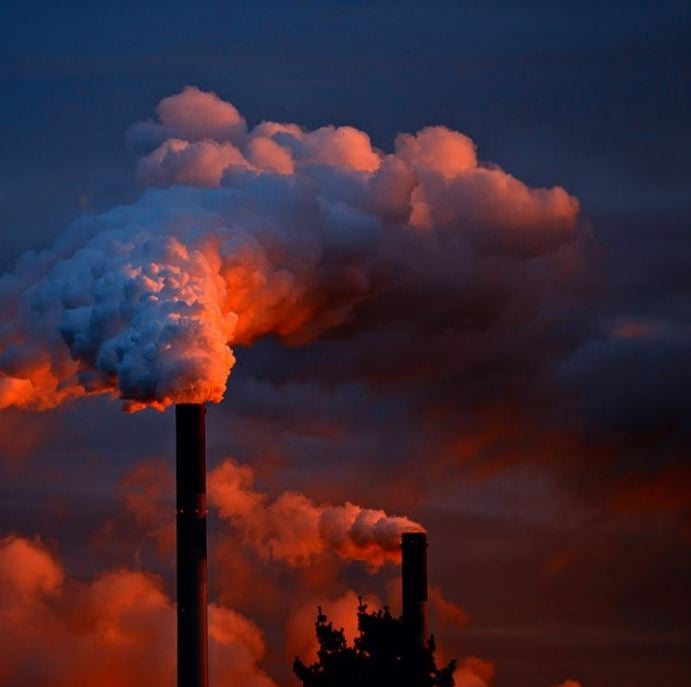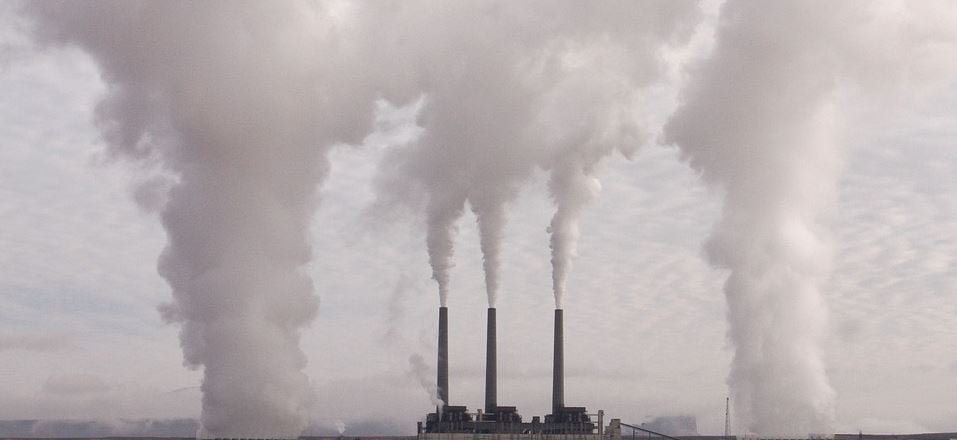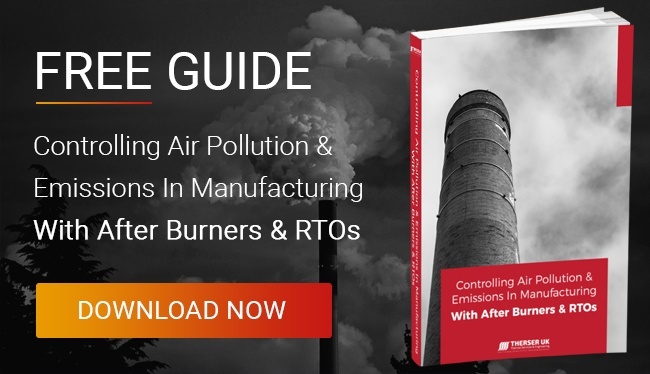Share this
Whis Is The Difference Between An RTO & An Afterburner?
by Therser Sales Team on 07-Feb-2018 14:10:59
Controlling polluting air emissions is now an important regulatory requirement, as well as an environmental and health concern. No one really wants to be part of causing the reported 12,000 deaths per year in the UK caused by airborne pollutants in the workplace. Equally there may not be a lot of room in the bottom line of your business to adequately address it either, so what is the answer? Is there a cost-effective way of meeting all regulatory requirements?
Legislation is increasing, and is playing catch-up with the growth in awareness of the links between industrial pollutants and a range of chronic health conditions. Compliance is mandatory and can be expensive, so let’s look at some solutions that may relate to your business.

CLICK HERE to download 'Controlling Air Pollution & Emissions In Manufacturing'
Regenerative Thermal Oxidisers (RTO’s) & Afterburners – What Are They?
These two options have become the most widely used in dealing with emissions in heavy industry. They both are thermal oxidisers, or incinerators, but they behave in unique ways, and usually only one of the two would be needed for any particular situation.
Afterburners
These units are typically built from a mild steel casing, insulated with refractory bricks, and use a simple combustion method which converts complex hydrocarbons into Carbon Dioxde and water, rendering them harmless. By the same process, Nitrogen Oxide is reduced to Nitrogen and water.
The mechanics of the burners is very simple. Gas-operated burners are used inside an incinerator tube, with the exhaust inlet coming in, and a chimney coming out. The heat created by the burners pulls the emitted gases from the inlet in a swirling motion through each flame, a process called flame washing.
Air ducts on top of the incinerator allow air in to cool the flame washed emissions and fan it out the chimney. The working temperature can be as high as 900°C to 1,100°C, while the exhaust will be 100°C to 300°C.
At the top of the incinerator, air ducts pull in diluting air, which cools the purified exhaust and channels it out through a chimney. On a six burner afterburner, the temperature in the incineration tube can be set as high as 900°C to 1,100°C. After cooling, the combined outflow exhaust is reduced to 100°C to 300°C.
At Therser, we manufacture a comprehensive range of afterburners, which will efficiently control your non-compliant waste emissions.
CLICK HERE to download 'Controlling Air Pollution & Emissions In Manufacturing'
Regenerative Thermal Oxidisers (RTOs)
RTOs use between two and five heating chambers, and are much larger than afterburners, therefore requiring more extensive infrastructure. They use a secondary heat recovery process, which enables them to deal with a wider range of pollutants, including:
- Carbon Monoxide
- Furans and Dioxins
- Hydrocarbons such as inorganic particles, phenols, acids, and formaldehyde
- Chlorinated Hydrocarbons
- Unpleasant odours e.g. ammonia
RTOs require more space and require more capital outlay than the more simple afterburners, but they have the capacity to recover more than 95% of the generated heat, meaning a significant cost saving. In fact, the most up-to-date RTOs are capable of fuel free operation at low concentrations.
An RTO operates by first pulling the waste emissions in through an inlet tube with the use of a fan. There are a series of burner chambers, each controlled by a box of poppet valves which direct the heated gases over a heat exchanger bed and into the chamber. In each chamber the gas is mixed with a reduction agent and then flame washed as with the afterburner units. This is repeated through any number of chambers from two to five, given your particular requirements.

Controlling Pollution & Saving Costs
At Therser, our job is to design and supply you with the most ideal, clean, and efficient industrial air purification system, that allows you to use the latest heat recovery technologies to reduce harmful exhausts and convert waste heat/pollution into reusable energy. Afterburners and RTOs are heavy industrial plant and will require capital spend. There is no point trying to save money by purchasing an inferior unit. The incinerator has a job to do, and must be precision engineered to destroy the highest volume of pollutants. This being said, some incinerators are better than others. When we advise you on the best solution for your business, our criteria will be how much we can save you in terms of recovered exhaust heat, and emissions destroyed per energy unit used: in other words, how to get the best value for money. A good investment will pay for itself through improved compliance, better productivity and reduced maintenance costs.
Speak with one of our engineers to find out more. You can call us on +44 (0) 1782 824453, or send us an email to sales@therseruk.com. We have also written a full length e-book on controlling air pollution: Controlling Air Pollution & Emissions In Manufacturing With After Burners & RTOs, which explains the pros and cons of different incinerators in greater detail. Click here to download a FREE copy.
Share this
- Company News (90)
- Battery Materials (41)
- kiln (37)
- fabrication (29)
- Alloy (27)
- Furnace (27)
- Welding (16)
- Industrial Kilns (15)
- Battery (13)
- Ceramic Kilns (13)
- Processes (13)
- alloy fabrication (13)
- Shuttle Kilns (12)
- RTO’s (11)
- Vacancies (11)
- Hydrogen (10)
- Therser UK (9)
- Tunnel Kiln (9)
- Refractory (8)
- Therser (8)
- Wellman Furnaces (8)
- Brickwork (7)
- Case Studies (7)
- Afterburners (6)
- Fibre Lining (6)
- electric (6)
- Almor Wellman (5)
- thermal engineers (5)
- Biochar (4)
- Exhibition (4)
- Pyrolysis (4)
- Servicing (4)
- Spares (4)
- heat treatment (4)
- History (3)
- Ceramics Uk (2)
- Combustion Control Upgrades (2)
- Nitrogen (2)
- Temperature Control Rings (2)
- gas (2)
- Certificates (1)
- Instrumentation (1)
- MMC (1)
- RHK (1)
- Roller Hearth Kiln (1)
- Test Trials (1)
- aerospace (1)
- analyser (1)
- elec (1)
- oxygen (1)
- vans (1)
- September 2025 (2)
- May 2025 (2)
- March 2025 (1)
- February 2025 (2)
- January 2025 (5)
- December 2024 (5)
- November 2024 (7)
- October 2024 (5)
- September 2024 (4)
- August 2024 (14)
- July 2024 (13)
- June 2024 (2)
- May 2024 (5)
- April 2024 (13)
- March 2024 (8)
- February 2024 (12)
- January 2024 (14)
- December 2023 (6)
- November 2023 (12)
- October 2023 (24)
- September 2023 (11)
- August 2023 (11)
- July 2023 (9)
- June 2023 (15)
- May 2023 (53)
- April 2023 (5)
- March 2023 (6)
- February 2023 (7)
- January 2023 (3)
- December 2022 (8)
- November 2022 (5)
- October 2022 (11)
- September 2022 (1)
- August 2022 (2)
- July 2022 (1)
- June 2022 (2)
- May 2022 (1)
- March 2022 (1)
- February 2022 (1)
- January 2022 (1)
- December 2021 (3)
- October 2021 (1)
- August 2021 (1)
- June 2021 (1)
- May 2021 (4)
- April 2021 (2)
- March 2021 (4)
- February 2021 (2)
- December 2020 (3)
- November 2020 (1)
- September 2020 (3)
- May 2020 (1)
- April 2020 (2)
- March 2020 (1)
- January 2020 (1)
- December 2019 (1)
- July 2019 (2)
- June 2019 (1)
- April 2019 (2)
- March 2019 (3)
- February 2019 (4)
- December 2018 (1)
- November 2018 (1)
- September 2018 (2)
- August 2018 (1)
- July 2018 (1)
- May 2018 (3)
- April 2018 (1)
- February 2018 (3)
- January 2018 (2)
- December 2017 (3)
- November 2017 (1)
- October 2017 (2)
- September 2017 (4)
- August 2017 (1)
- July 2017 (2)
- June 2017 (2)
- May 2017 (3)
- April 2017 (3)


